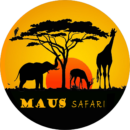Serengeti National Park
The Serengeti National Park is a World Heritage Site teeming with wildlife: Over 2 million ungulates, 4000 lions, 1000 leopards, 550 cheetahs and around 500 bird species inhabit an area almost 15,000 square kilometres in size. Join us on safari and explore the endless Serengeti plains dotted with trees and kopjes from which the majestic lions rule their domain; marvel at the Great Migration or spot an elusive leopard in a riverine forest. Or see it all from a bird’s eye view and soar over the plains at sunrise during a hot air balloon safari. Overnight accommodation is available in every price range – with the nightly roar of lions thrown in for free.
The Serengeti lies in the north of the country, bordering Kenya’s Masai Mara Game Reserve to the north and the Ngorongoro Conservation Area to the south.
The Serengeti is a must-see for anyone wanting to go on safari, as the park, along with Kenya’s Maasai Mara, is the only protected area in Africa where you can see the annual migration of hundreds of thousands of zebras and over a million wildebeest. The park is not only home to over three million animals, but also offers different landscapes.
One million wildebeest… each driven by the same ancient rhythm, fulfilling their instinctive role in the inevitable cycle of life: a frenzied three-week period of territorial conquest and mating; survival of the fittest as 40km columns rush north through crocodile-infested waters on the annual exodus; replenishment of the species in a brief population explosion that produces more than 8,000 calves a day before the 1,000km pilgrimage begins again.
On a game drive in the popular southern plains, you will be overwhelmed by the never-ending flat seas of grass. Trees in this region are mostly found around the huge granite formations called kopjes. These kopjes are home to the athletic but lazy rock hyraxes as well as a variety of reptiles such as colourful agama lizards and snakes. The rocks are also the perfect resting place for lions, leopards and cheetahs. The cats seem to prefer the kopjes as they serve as a good vantage point for potential prey, but also provide much needed shade during the scorching heat of the African sun and shelter for their young. All kopjes have names, the best known being the Simba, Gol, Research and Moru kopjes.
The Seronera Valley is the heart of the park, and here the vegetation changes to acacia-covered plains where lion and leopard sightings are frequent. The banks of the Seronera River are lined with lush palms, sausage trees and towering yellow fever acacias. The area around the river is home to a variety of bird species and large flocks of black-headed herons, marabou storks and various birds of prey. The Retina Hippo Pool is also located in the Seronera area. Here you can observe these gentle giants in their natural habitat.
Further towards the western corridor, the vegetation changes again. The area is predominantly swampy, forested savannah land known for its black cotton soil, which is impassable in the rainy season. The two major rivers in the area, the Grumeti and Mbalageti Rivers, both flow into Lake Victoria to the west. The Grumeti River is famous for its huge crocodiles that like to bask in the sun during the day, while the riverine forest in this area is home to the rare Patas monkeys.
The northern part of the park consists mainly of open forest areas, riverine forests and mountains. Here in the north flows the majestic Mara River, and it is this river in particular that all migratory animals fear to cross, as crocodiles up to 5 m in size lurk beneath the surface of the water. The northern part of the Serengeti is much less frequented by visitors, making it a great place for an intimate safari experience.
The Serengeti is home to one of nature’s greatest animal migrations. More than 1.5 million white-bearded wildebeest and 250,000 zebra take part in the 1000 km journey in search of greener pastures. On their way to the rich grazing grounds, they have to overcome the most dangerous obstacle on their journey: the Mara River, famous for its huge prehistoric reptiles, the crocodiles.
In addition to the annual migration, the Serengeti is also home to the “Big Five” – lion, elephant, buffalo, rhino and leopard – and it is claimed that the Serengeti has the highest lion population in the whole of Africa. Leopards are often spotted relaxing while large herds of elephant and buffalo graze in the savannah. Although the park is also home to very few black rhinos, they are rarely seen as they hide in the bushier areas of the park.
But it is not only mammals that are at home here, there are also over 500 species of birds, including ostriches, secretary birds, various species of vultures and eagles, Egyptian geese, black-headed herons, crowned cranes, Kori bustards and many more that can be found in the Serengeti National Park.

